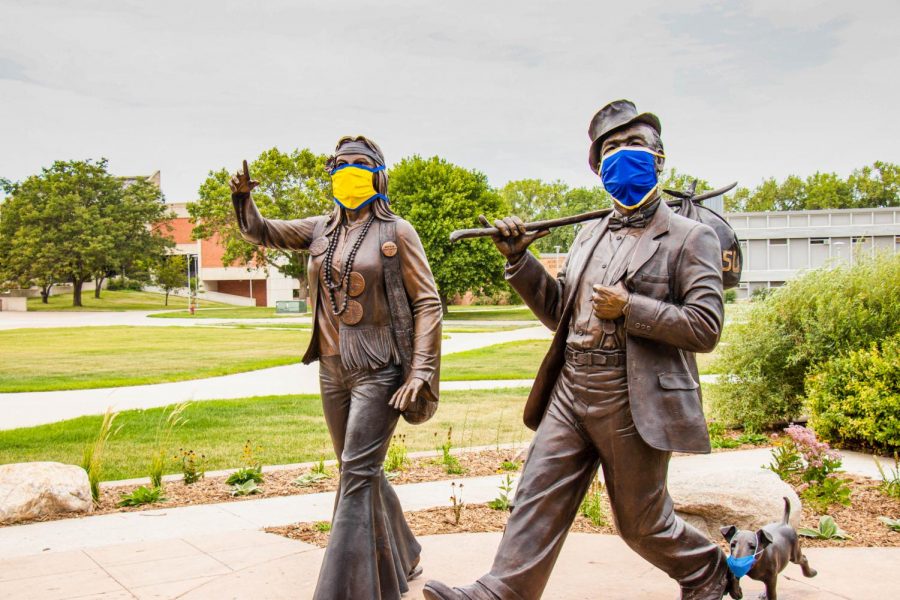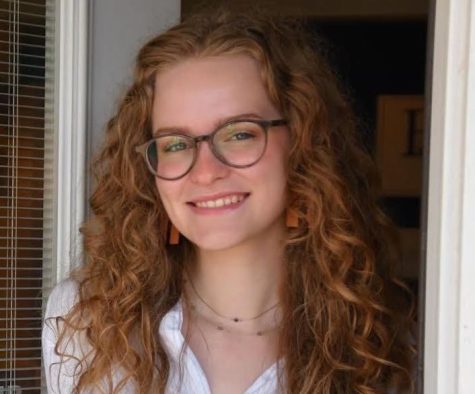Back to the books: Jackrabbits return to campus
August 26, 2020
Sawyer Bernd, a freshman at South Dakota State University, awoke the first morning of classes anxious to start his first year of college. However, instead of making the trek across campus, Bernd settled into his desk, ready to listen to his Zoom lecture.
Bernd, like all college freshmen across the country, is kicking off his college experience in an unconventional, isolated way.
“It would have been nice to be in-person to actually meet my instructor and for that first impression to be face-to-face,” Bernd said.
In response to the pandemic that swept across the nation early this year, SDSU implemented a hybrid lecture system to minimize the contact people have with each other in the classroom. Professors are encouraged to split their classes between in-person lectures and online Zoom meetings. When in the classroom, everyone is required to wear face coverings and spread out as much as possible.
Although these measures are intended to keep everyone safe, students can already feel the disconnect with their peers and professors.
“It sucks not being able to have those small conversations before class with people who have the same likes as me,” Bernd said. “Not being able to have that personal level with the instructor, that’s kind of difficult.”
Despite all of these changes, the university is working to ensure students still have as close to an authentic college experience that is allowed at this time.
Provost of Academic Affairs Dennis Hedge oversees the academic operations on campus and was a part of the JacksRBack team that helped departments make the necessary changes for this semester.
“We wanted to elevate our conversations on campus about [connecting with students during challenging times], and really ask faculty and staff members to be intentional about connecting with students,” Hedge said.
Despite the abrupt change to online learning last March, Hedge reported no drop in the overall grade point average and attendance of students. He largely attributes this to students’ ability to retain information better with a multi-modality learning environment.
“The opportunity to have a hands-on, face-to-face experience, but then have that supplemented with something that you may do through an electronic learning platform, actually becomes a higher level of learning,” Hedge said.
Hedge is hopeful that this unexpected form of learning will be beneficial for the Fall 2020 semester as well. As a matter-of-fact, students are already showing more interest in academia this year than in previous.
The retention rate, or the number of new freshmen that continued with their bachelor studies at SDSU, is up by over 3% from last year.
According to Hedge, this time last year, the preliminary retention rate was at 78.51%. During the first week of classes, the retention rate was 81.60%.
Hopefully, a successful partial-semester of online learning has prepared students for the hybrid system in place today. Students certainly seem eager to get back on campus and begin learning again.
However, students must also do their part in keeping everyone safe if the university has any hope to remain open and operational.
Bernd, coming from a town much smaller than Brookings, stresses about the heightened potential for contracting the virus.
“I have to keep in mind to keep my friend group small and to keep up with hand sanitizer and stuff,” Bernd said. “It’s nice being in a bigger city to be a part of a bigger community, but I have to take precautions to take it more seriously.”
Hedge also cautions people to take the pandemic seriously and to do their part so SDSU can remain open for students to continue learning in a hybrid environment until the risk is decreased.
“We’re all a part of a Jackrabbit family, and that means not only do we have to look out for our own individual health and safety, but we’re in this together,” Hedge said. “We have an obligation to look out for each other.”

























